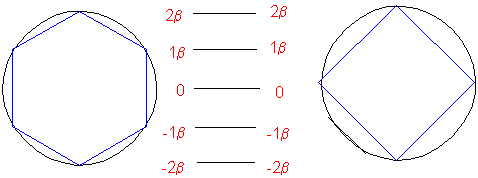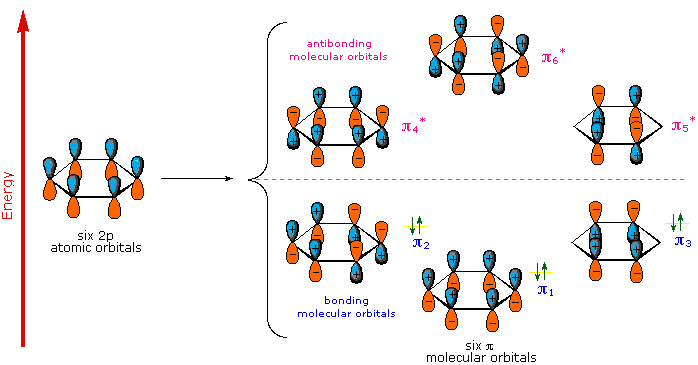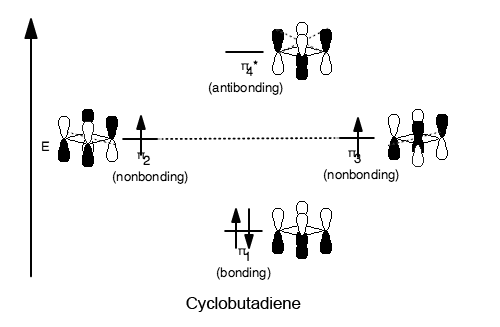Why is 1,3 cyclobutadiene not aromatic?
1 Answer
The simple explanation is that it has
FROST CIRCLES
Drawing Frost circles (not to be confused with the Frost diagrams you may have learned in Inorganic Chemistry) for an all-carbon, monocyclic
It essentially gives the positions of each set of group orbitals and their relative energetics.

- The shape inscribed in the circle is, of course, the shape of your molecule (for a shape with
#2n+1# sides, align the symmetry axis vertically). - The points on the shape indicate the energetic locations of each set of group orbitals on an MO diagram.
- The energy of the orbital is stated as
#alpha pm nbeta# , where#alpha pm (n+1)beta# is larger in magnitude than#alpha pm nbeta# . - The center of the circle is
#0beta# ; anything below the center is bonding, and anything above the center is antibonding. Anything at the center line is nonbonding.
For instance, benzene, when you draw this out, has (top to bottom):
- one antibonding group orbital with energy
#alpha + 2beta# - two degenerate antibonding group orbitals with energy
#alpha + beta# - two degenerate bonding group orbitals with energy
#alpha - beta# - one bonding group orbital with energy
#alpha - 2beta# .
This corresponds to the following MO diagram which illustrates the sets of group orbitals that benzene has:

And indeed, you can see that
The number of nodes are
For cyclobutadiene, when you draw this diagram out, it has (top to bottom):
- one antibonding set of group orbitals with energy
#alpha + 2beta# - two degenerate nonbonding sets of group orbitals with energy
#0beta# - one bonding set of group orbitals with energy
#alpha - 2beta# .
From this, I constructed an MO diagram of cyclobutadiene with drawings of the group orbitals, similar to the MO diagram of benzene.

The energy ordering is justified, since
Since there is one electron in each nonbonding group orbital (
Below is someone else's proposed theory that the two nonbonding group orbitals split into one with more bonding character and one with more antibonding character. That way, two electrons can occupy
PSEUDO-JAHN-TELLER DISTORTION?
Cyclobutadiene is probably not a square; actually, it has been theorized that due to its antiaromaticity, it distorts its shape to a rectangle with alternating single and double bonds to remove the degeneracy of the two nonbonding
This increases the energy of one of the nonbonding group orbitals and decreases the energy of the other to stabilize the bonds and form one more bonding set of group orbitals and one more antibonding set of group orbitals.
This would show that the group orbitals
As a result, you don't get a molecule with a conjugated

